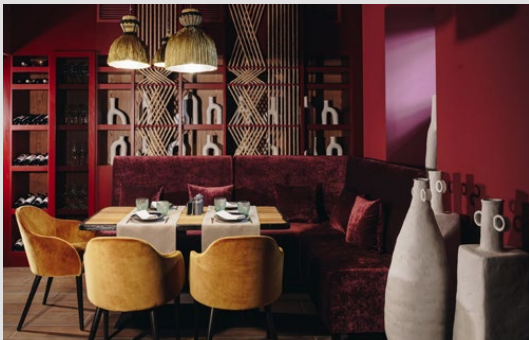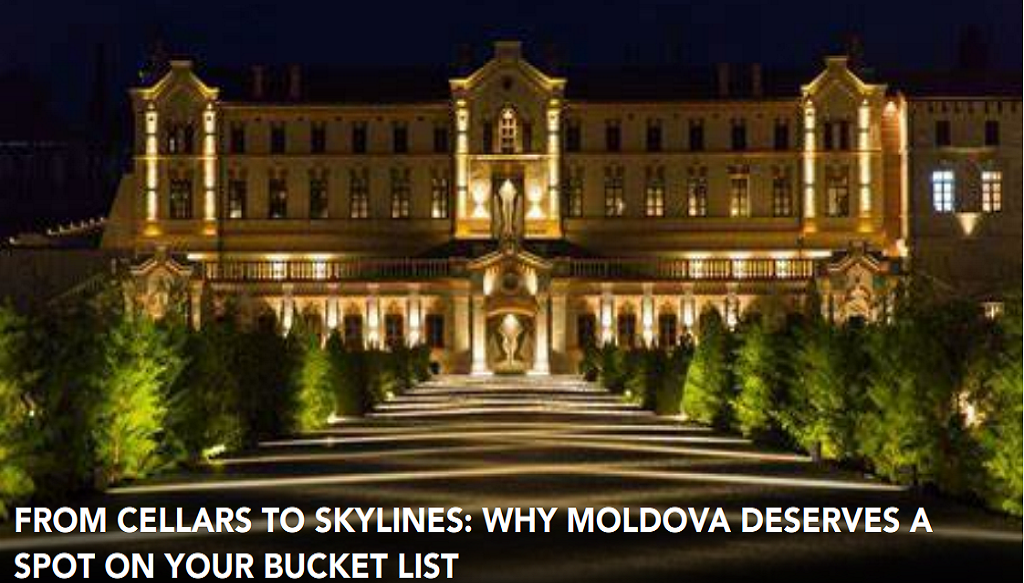
Nivedita Bhalla
In house curator (WSCI) Wine & Spirits Club of India
Through its vineyards and old monasteries,
Moldova, a land that whispers narratives of time,
keeps revealing its riches. Our earlier exploration
of this treasure from Eastern Europe involved
discussing its captivating blend of history, art, and subtle charm. Diana Moraru, the visionary
director of IndoMold Connect, while speaking to
her, she intently focused on placing Moldova on
the world’s bucket list; as she likes to say,
“Moldova is gently strong. Though it might be
small, the richness we carry in our soil, our
stories, our people are something the globe is
only now beginning to appreciate.”
Native Grape Kinds in Moldova
Having a winemaking history stretching back over 5000 years, they certainly have national jewels. Each offering a different interpretation of the Moldovan landscape, Fetească Neagră and Rara Neagră are these.
Having a winemaking history stretching back over 5000 years, they certainly have national jewels. Each offering a different interpretation of the Moldovan landscape, Fetească Neagră and Rara Neagră are these.
With deep crimson hues, Fetească Neagră (Black
Maiden) is a daring, dark-skinned grape that
produces wines. With blackberry, dried plum, and
pepper notes, its flavor profile is complicated.
The elegance, disciplined body, and expressive
nature of wines created from Fetească Neagră
make them suitable for aging. Pairing very well with red meats, rich sauces, and even dark
chocolate desserts, this ancient variety shows
great flexibility and sophistication with roots
going back to Dacian times.
Often referred to as Băbească Neagră in nearby
Romania, Rare Black provides a more delicate
and lighter option. Subtle floral scents, red
berries, and a mellow earthy aftertaste
characterize its wines. Usually ruby-colored, Rara
Neagră wines are velvety and full-bodied,
featuring fine tannins and strong aromas of
rosehip flower, red currant, and wild blackberry,
sometimes accompanied by notes of dark
chocolate and dried plums. Cultivated for
millennia, this venerable grape became world
famous when a Purcari blend including Rara
Neagră won a gold medal at the 1878 Paris
Exposition. Though susceptible to frost, its
growth in Moldova and Romania yields classy, light, and well-balanced dry red wines. Rara
Neagră’s rich and deep flavor and long aftertaste
make it a great compliment for roasted or baked
meats, hot meals, and several cheeses. Diana says,“These grapes tell stories of our land; each
sip bears the passion of generations. ”
Experiences from Premier Wine Tour
Through vast subterranean cellars and famous mansions, Moldova’s wine tourism infrastructure offers immersive experiences that beckons guests to discover its winemaking past. Originally founded in 1893 by imaginative winemaker Constantin Mimi, Castel Mimi is a historic 19th-century house that has been meticulously converted into a wine and culture complex. Modern hospitality and Belle Époque design mix easily. The estate holds outdoor celebrations and activities in addition to premium tastings and tours throughout its underground cellars.
Through vast subterranean cellars and famous mansions, Moldova’s wine tourism infrastructure offers immersive experiences that beckons guests to discover its winemaking past. Originally founded in 1893 by imaginative winemaker Constantin Mimi, Castel Mimi is a historic 19th-century house that has been meticulously converted into a wine and culture complex. Modern hospitality and Belle Époque design mix easily. The estate holds outdoor celebrations and activities in addition to premium tastings and tours throughout its underground cellars.
Beyond
its historical appeal, Castel Mimi offers a range of
organised wine excursions, including Family,
Classic, Iconic, Authentic (with lunch or dinner
options), Tour Fusion, The Governor, and
Connoisseur Class Workshops. Diana Moraru
views Castel Mimi as “a symbol of how Moldova
bridges tradition and ambition” and asserts that
“It reflects the elegance and strength of our
identity”. These tours probe into the estate’s
great past and the larger story of Moldovan wine
by means of cellar visits, wine tastings, cooking
seminars, even hands-on wine blending events.
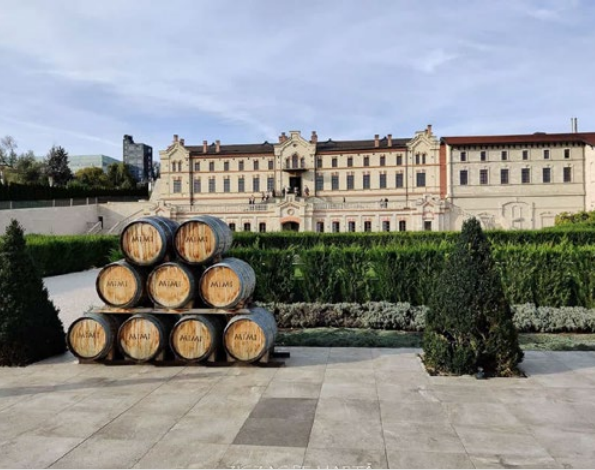
A World record
Some of the most large and spectacular wine cellars in the world are in Moldova; they serve as underground cities meant for storage and aging of wine. The cultural identity and winemaking of the nation depend on these enormous tunnel systems.
Some of the most large and spectacular wine cellars in the world are in Moldova; they serve as underground cities meant for storage and aging of wine. The cultural identity and winemaking of the nation depend on these enormous tunnel systems.
Located only 15 kilometers from Chișinău,
Cricova Winery is an especially good illustration.
Formed into a massive labyrinth of wine cellars,
this underground wine metropolis covers almost
120 kilometers of limestone tunnels. It is home to
over 1. 3 million bottles, including ancient
collections formerly owned by famous people
and dignitaries. Guided electric vehicle trips
traverse these subterranean “streets,” each
named after particular wine varietals such
“Cabernet” and “Sauvignon.” Access to
cinematic history rooms, marble tasting halls, and
sparkling wine galleries are also part of the
excursions.
Diana Moraru properly characterizes Cricova as
“not just a winery it’s a national treasure. It
reflects the grandeur and mystery that Moldova
quietly holds. Every visitor walks away
enchanted.” Cricova, an underground wine city,
astounds one with its sheer size.
With more than two million bottles, Milestii Mici
owns the Guinness World Record for the biggest
wine collection. With its extensive tunnels
sometimes called after particular grape kinds, this
subterranean network covers around 200
kilometers. Experience first-hand the great
breadth of Moldova’s wine storage capacity as
visitors can ride bicycles and even drive vehicles
through these vast corridors. The unmistakable
scent of aged wine defines Mileștii Mici’s interior,
and the quiet surroundings heightens the deep
historical awareness kept within these
underground caverns. This enormous maze acts
as a vast repository for its outstanding collection
of more than 1. 3 million bottles. Showing
Moldova’s deep and ongoing link to its
winemaking legacy, Mileștii Mici and Cricova are
not simply storage facilities but rather essential
components of the Moldovan wine experience.
These are excursions deep inside the core of
Moldova’s ancient winemaking culture rather
than just brief wine tastings.
Further proof of Moldova’s dedication to
viticulture is found in its planned wine routes: the
rich Codru Route, famous for its rolling terrain
and monasteries; the sun-kissed Ștefan Vodă
Route, home to the historic Purcari Winery dating
back to 1827; and the historically significant Valul
lui Traian Route, merging ancient landscapes with
modern viticultural methods. Offering immersive
experiences across Moldova’s rich cultural and
winemaking legacy, these paths go beyond only
links between wineries.
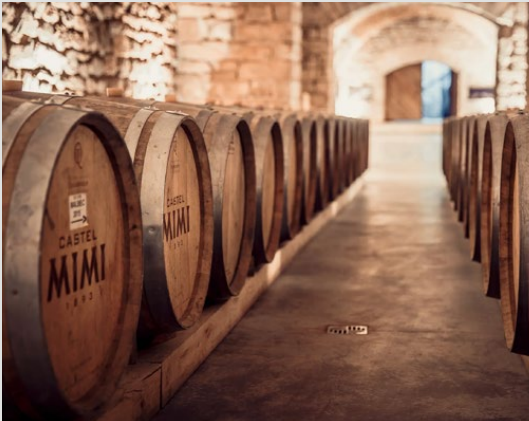
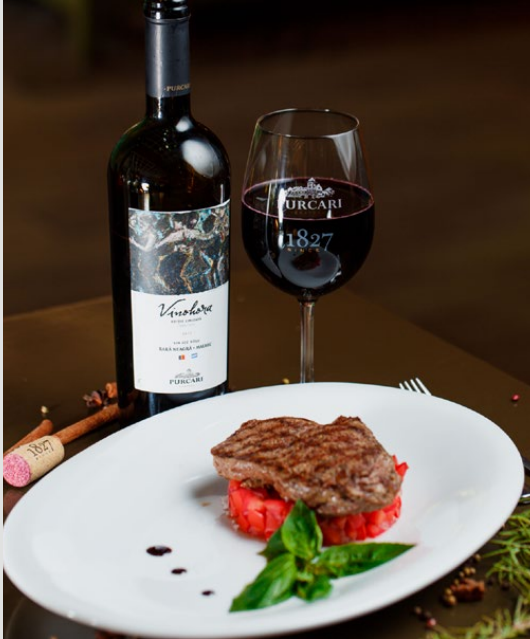
Savouring Moldova
Moldovan cuisine is a sincere reflection of its cultural tapestry, combining Romanian origins with significant Ukrainian and Russian influences. It is a food that provides warmth, comfort, and a strong feeling of legacy. “Food in Moldova is an act of love” Diana Moraru rightly points out.
Moldovan cuisine is a sincere reflection of its cultural tapestry, combining Romanian origins with significant Ukrainian and Russian influences. It is a food that provides warmth, comfort, and a strong feeling of legacy. “Food in Moldova is an act of love” Diana Moraru rightly points out.
La Plăcinte is spearheading the charge in
conventional Moldovan cuisine. This favorite
restaurant franchise specializes in homestyle
meals at several locations throughout Chișinău
and beyond. Famous are their signature plăcinte,
a delicious pie stuffed with apples, potatoes, or
cheese. The cuisine at La Plăcinte reminds one of
the warm hug of a Moldovan grandma’s cooking,
whether it’s eating mămăligă (polenta), sarmale
(cabbage rolls), or zeamă (a traditional sour soup).
Gastrobar provides a hip and modern
interpretation of Moldovan classics for those
searching. Their experiences are grounded in
genuineness. Under this establishment,
conventional dishes are modernized to highlight
Moldova’s new culinary movement’s
inventiveness. Meals like duck with quince glaze
or deconstructed colțunași (dumplings)
emphasize a creative approach. Though it has a
cosmopolitan ambiance, Gastrobar’s heart stays
clearly indigenous.
Here, Diana says, “Food in Moldova is an act of love. At La Plăcinte, it’s nostalgia. At Gastrobar, it’s innovation. Both tell our story beautifully.”
Here, Diana says, “Food in Moldova is an act of love. At La Plăcinte, it’s nostalgia. At Gastrobar, it’s innovation. Both tell our story beautifully.”
Moldova as a Growing Opportunity: Beyond
Tourism
Although Moldova’s cultural riches including its culinary wonders and winemaking legacy are clearly intriguing, its future prospects go well beyond travel. The country is carefully presenting itself as a desirable location for visitors, scholars, and foreign investors. Its proximity to the European Union, a competent and multilingual workforce, and low pricing further support this strategic advantage. Diana notes, “We’re trying to position Moldova on the worldwide chance map,” emphasizing that “From welcoming Indian students to agribusiness partnerships or tourism cooperation this is only the start”. This aggressive strategy highlights Moldova’s will to increase its worldwide presence and unleash its full potential. Our travels across Moldova extend beyond the opulent vineyards and historical cellars to encompass the country’s vibrant culinary scene and its increasing global prominence. Having investigated the complexities of Moldovan wine, we now focus on the genuine flavors that distinguish its cuisine and the strategic prospects that present Moldova as a growing European country.
Although Moldova’s cultural riches including its culinary wonders and winemaking legacy are clearly intriguing, its future prospects go well beyond travel. The country is carefully presenting itself as a desirable location for visitors, scholars, and foreign investors. Its proximity to the European Union, a competent and multilingual workforce, and low pricing further support this strategic advantage. Diana notes, “We’re trying to position Moldova on the worldwide chance map,” emphasizing that “From welcoming Indian students to agribusiness partnerships or tourism cooperation this is only the start”. This aggressive strategy highlights Moldova’s will to increase its worldwide presence and unleash its full potential. Our travels across Moldova extend beyond the opulent vineyards and historical cellars to encompass the country’s vibrant culinary scene and its increasing global prominence. Having investigated the complexities of Moldovan wine, we now focus on the genuine flavors that distinguish its cuisine and the strategic prospects that present Moldova as a growing European country.
Thus, whether experienced via a glass of
Fetească Neagră, a bite of handmade plăcintă, or
a depth of exploration in an underground wine
cathedral such Cricova, visitors find something
really uncommon. It’s a nation where the weight
of history, the abundance of its culture, and the
true warmth of its people mix to produce an
experience much more than just travel. As Diana
and other visionaries continue to open doors and
share Moldova’s story with the world, the country
extends a sincere welcome to discover a very
special and meaningful location. For travelers
looking for something more meaningful and less
conventional than typical popular destinations,
Moldova offers to make a great imprint not just
on their itinerary but also on their lasting
memories.
